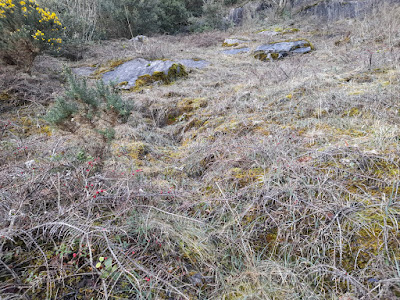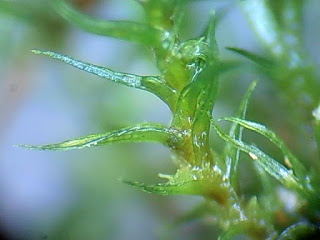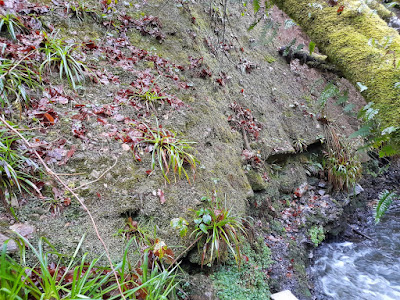Cotoneaster and Southbya
It can surely only be a matter of time before the larger of Pembrokeshire's two Southbya tophacea colonies is overwhelmed by the triple-whammy of Cotoneaster horizontalis, C. simonsii and Quercus ilex which all now spread unchecked across the old quarry on Lydstep Head. After making some headway with the Cotoneaster for a few years, the National Trust seem to have given up now, and even the fishermen who unwittingly kept a path open for the liverwort don't appear to have been this way for a while. There were still a few nice patches of Southbya on the middle section of the path, but I didn't notice the Leiocolea badensis which I'd found lower down a year or two back.
A few hundred yards away, some strikingly long excurrent nerves caught my eye, and proved to belong to another variety of Tortula acaulon, var. pilifera. This had previously only been found in tiny quantity in two other locations on the south coast, so it was nice to record a couple of patches here. I didn't manage to find any bog-standard var. acaulon to finish the set.
Bryum kunzei was the only other new bryophyte for the site - I've now recorded this on all of the four main coastal limestone sites in the county. Tortula protobryoides was fruiting in several places, and Tortula lanceola in a couple. Pleurochaete squarrosa has re-appeared after Sam noted it as lost to rank grassland here.


























